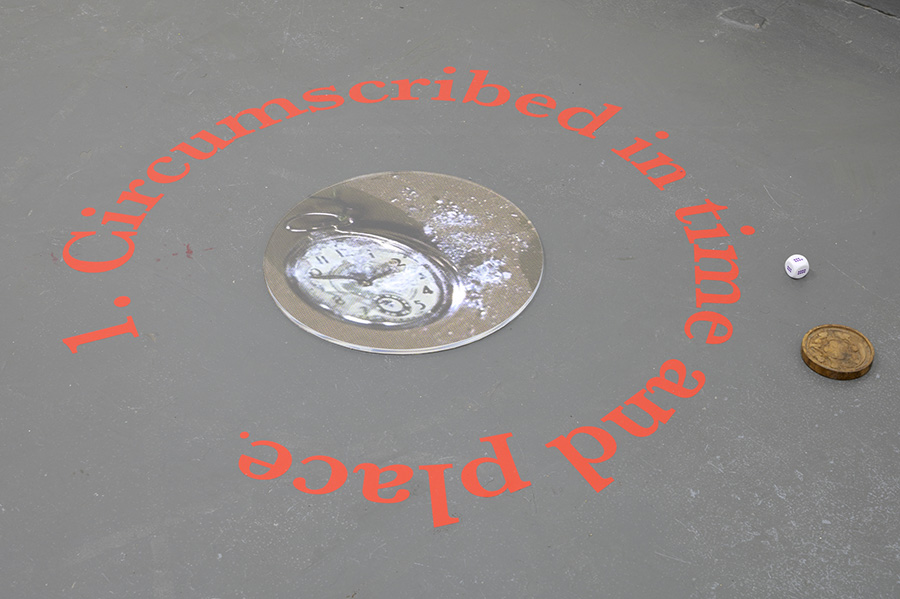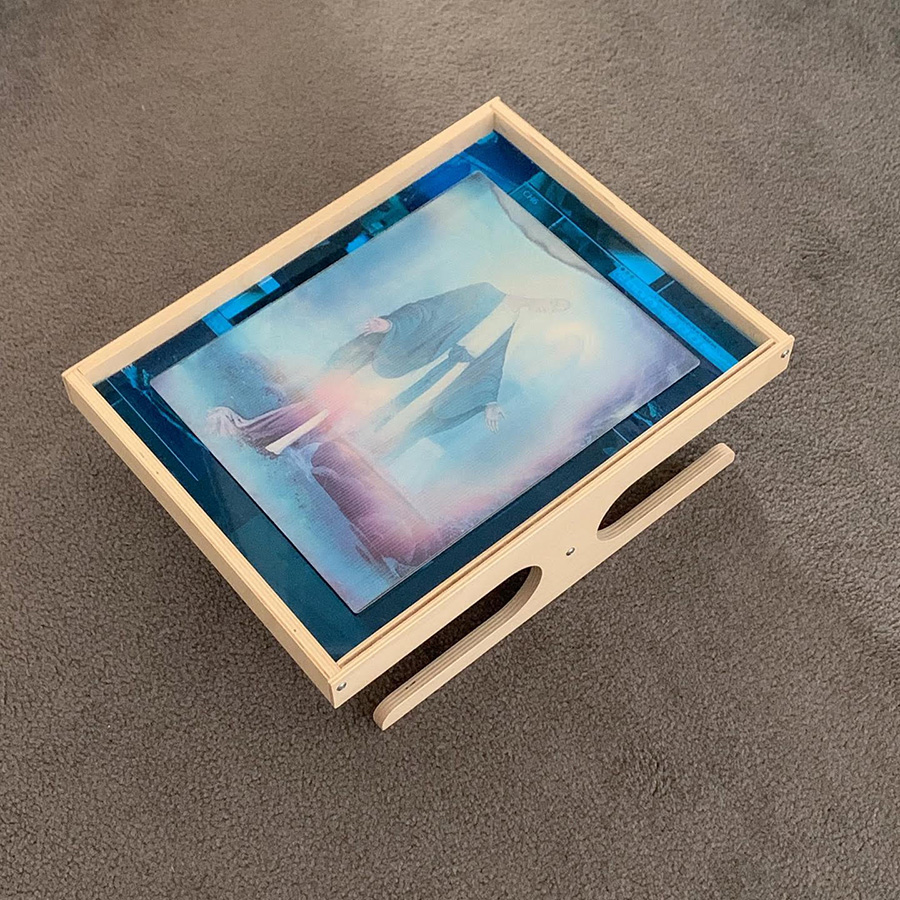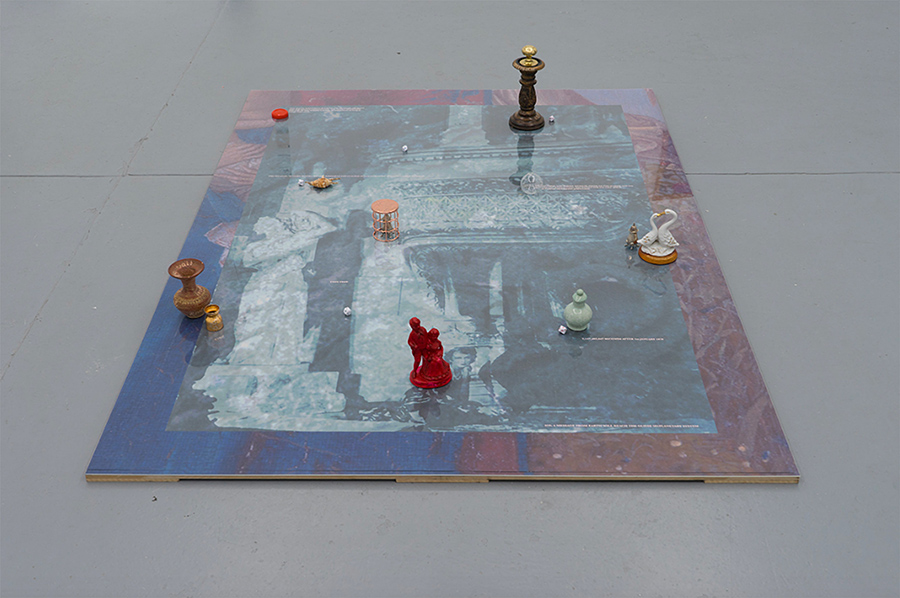-



The Second Charade: The figure returns
Something that perhaps sits outside of speech, 2018, Perspex, archival inkjet print, MDF, engraved wood, porcelain and metal figures, 120cmx 68cm Installation view, Irene Rose Gallery. Photography: Ruben Bull Milne
Excerpt- The Second Charade, 2020, Perspex, inkjet print, vinyl, 1 meter diameter (Part of Series) Install view, SEVENTH Gallery. Photography: Aaron Christopher Rees
Indelible Apparition, 2020, Lenticular print, perspex, inkjet print, fabricated frame 29cm x 42cm x 30cm
Katie Paine is a Naarm-based artist and writer whose practice investigates systems of meaning-making, specifically the role that language and images play in constructing narrative. The presentation of this body of work articulates a line of enquiry within Paine’s practice over a two-year period that metaphorically considers the figure of the spectre haunting across the decades in order to explore the dissemination of images through time and problematise linear chronologies. The installation Something that, perhaps, sits outside of speech builds a deconstructed chronological table on which objects and images are configured in space to map moments and events in history, both fictional and actual, using the structure of a board game. Here a second world arises as a ghostly double of our own, riddled with fissures and discrepancies, and information is mapped by the use of markers.
The Second Charade (Excerpt) uses a film still from Roman Polanski’s detective film China Town that depicts the splintered face of a stopwatch used by an investigator in an attempt to determine a discrete moment in time. This work considers the role of images as evidential documents and queries the possibility of capturing temporal junctures. The image from Polanski’s film, bereft of its original context, becomes spectral: reduced to the role of a cypher through which an alternate narrative may be deduced.
Finally, An Indelible Apparition considers slippery, elusive images that haunt; recurring over time. The work consists of a lenticular print of the Madonna. Throughout the canon of Western art history, the Madonna remains perpetually youthful– whether cradling the infant Christ or clutching his mutilated adult body, wracked with grief after his crucifixion. Like a ghost who mourns their lover in Gothic literature, she remains timeless. Propelled by her grief across decades, she echoes across the field of representation.
katielouisepaine.com | @dreamsofspeaking